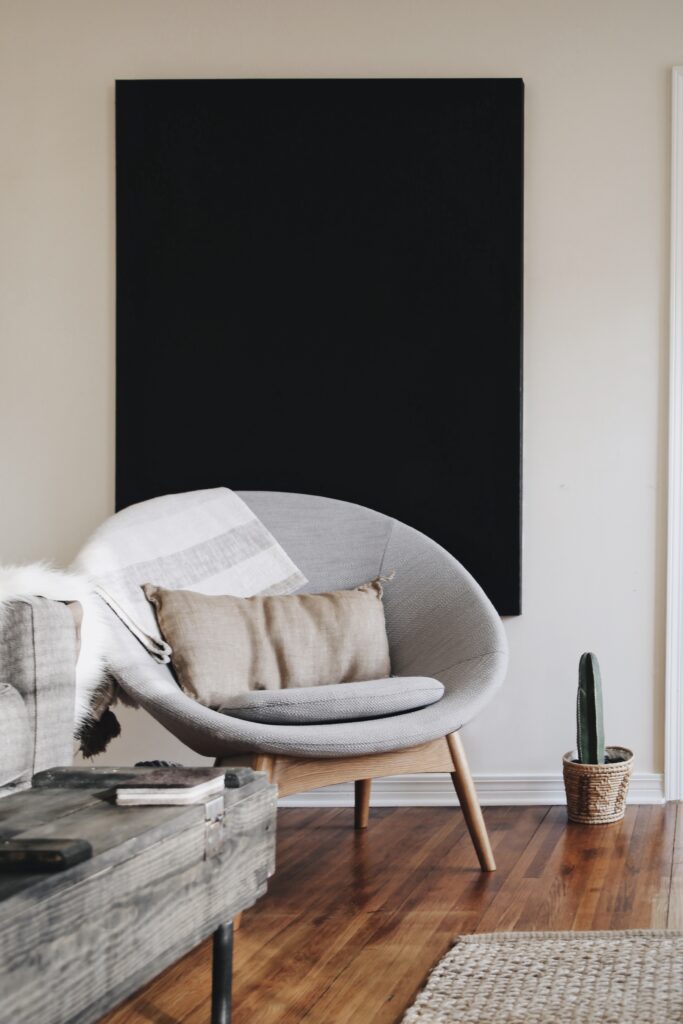Building a tiny home may seem like a dream come true, providing an opportunity to create a cozy, minimalist space that perfectly suits your needs and lifestyle. However, there are common mistakes that many people make when embarking on this venture. From overlooking important regulations and zoning requirements to underestimating storage needs, these challenges can easily turn your dream into a nightmare. In this article, I will highlight some of the most common mistakes to avoid when building a tiny home, helping you navigate the process smoothly and ensure the success of your miniature abode.
Poor Planning



This image is property of images.unsplash.com.
Rushing into the project without proper planning
When it comes to building a tiny home, one of the most common mistakes people make is rushing into the project without proper planning. Building a home, regardless of its size, requires careful consideration and planning. It’s important to take the time to thoroughly plan out every aspect of the construction process, from the design and layout to the materials and budget. By rushing into the project without proper planning, you may find yourself facing numerous challenges and setbacks along the way.
Failing to consider zoning and building regulations
Another common mistake that individuals make when building a tiny home is failing to consider zoning and building regulations. Every jurisdiction has its own set of rules and regulations regarding construction, and it’s essential to familiarize yourself with these before starting your project. Ignoring or neglecting these regulations can lead to fines, forced removal of your tiny home, or even legal issues. It’s crucial to consult with local authorities and obtain any necessary permits or approvals before beginning construction.
Overlooking the need for a solid foundation
One aspect of building a tiny home that often gets overlooked is the importance of a solid foundation. A sturdy and well-built foundation is essential to the structural integrity and longevity of your tiny home. Many people make the mistake of assuming that since tiny homes are smaller and lighter, they don’t require the same level of foundation support as traditional homes. However, failing to invest in a proper foundation can result in structural issues, such as uneven settling, cracking walls, or even collapse.
Inadequate Space and Storage Design
Not optimizing the limited space efficiently
When designing a tiny home, it’s crucial to optimize the limited space efficiently. One of the most common mistakes in this regard is failing to maximize every square inch of your tiny home. By carefully planning the layout and utilizing space-saving techniques, you can greatly enhance the functionality and livability of your small space. Consider utilizing vertical storage solutions, multifunctional furniture, and clever space-saving hacks to make the most of your tiny home.
Ignoring the importance of multi-functional furniture
Another mistake that many people make is ignoring the importance of multi-functional furniture. In a tiny home, every piece of furniture should serve multiple purposes to make the most of the limited space. Investing in furniture that can convert into different configurations, such as sofa beds or folding tables, can help maximize both seating and sleeping areas. Additionally, built-in storage solutions, such as hidden compartments or drawers, can help keep your tiny home organized and clutter-free.
Neglecting the need for sufficient storage
Having sufficient storage is essential in any home, and it’s especially crucial in a tiny home where space is at a premium. Neglecting the need for sufficient storage can lead to a cluttered and disorganized living space. When designing your tiny home, prioritize creating ample storage solutions, such as built-in closets, shelving, or overhead cabinets. By carefully planning and incorporating smart storage options, you can keep your tiny home tidy and functional.
Insufficient Insulation
Underestimating the importance of insulation for energy efficiency
Insufficient insulation is a common mistake when building a tiny home and can result in significant energy efficiency issues. Many people underestimate the importance of insulation in a small space, leading to problems with temperature control and high energy bills. Proper insulation helps regulate the interior temperature by preventing heat transfer, keeping your tiny home warm in winter and cool in summer. By investing in quality insulation materials and ensuring proper installation, you can create a comfortable and energy-efficient living space.
Using improper insulation materials
Selecting the right insulation materials is crucial to ensure optimal energy efficiency and comfort in your tiny home. However, using improper insulation materials is a mistake that many people make. Not all insulation materials are suitable for tiny homes, as some may be too bulky or not provide adequate insulation. It’s important to research and choose insulation materials that are suitable for small spaces and meet your specific needs. Additionally, consider factors such as fire resistance and environmental impact when selecting insulation materials.



This image is property of images.unsplash.com.
Neglecting proper sealing and air-tightness
Proper sealing and achieving air-tightness are vital aspects of insulation that are often overlooked. Even with high-quality insulation, if your tiny home has gaps or leaks, your insulation efforts will be compromised. Neglecting proper sealing can lead to drafts, moisture issues, and reduced energy efficiency. Take the time to properly seal windows, doors, and any other openings to ensure an air-tight seal. This will not only improve insulation but also prevent unwanted airflow and moisture infiltration, ultimately creating a more comfortable living environment.
Poor Ventilation and HVAC Planning
Failing to consider proper airflow and ventilation
Proper airflow and ventilation are often neglected when planning and building a tiny home. In a small space, it’s important to consider the quality of indoor air and to have proper ventilation to ensure a healthy living environment. Insufficient ventilation can lead to poor air quality, condensation, and even mold growth. Take into account the placement of windows, vents, and exhaust systems to promote adequate airflow and allow for proper ventilation throughout your tiny home.
Neglecting the importance of HVAC systems for comfort
The comfort of your tiny home greatly depends on the heating, ventilation, and air conditioning (HVAC) systems. However, many people underestimate the importance of these systems and neglect to adequately plan for them. Depending on your climate and preferences, you may need to consider heating and cooling systems, such as space heaters, air conditioners, or heat pumps. Proper HVAC planning ensures a comfortable living space year-round, regardless of external weather conditions.
Overlooking the need for moisture control and prevention of condensation
Moisture control is a critical aspect of proper ventilation, yet it is often overlooked when building a tiny home. Insufficient moisture control can lead to condensation issues, which can cause mold growth and damage to your tiny home. Consider incorporating moisture-resistant materials and implementing strategies such as proper ventilation, dehumidifiers, and management of moisture-producing activities, such as cooking and showering. By prioritizing moisture control, you can enhance the longevity and livability of your tiny home.
Electrical and Plumbing Oversights
Inadequate electrical planning and distribution
Electrical planning is an often-overlooked aspect of building a tiny home, but it is crucial for safety and functionality. Inadequate electrical planning can result in insufficient power supply, overloaded circuits, or even fire hazards. It’s important to consult with a professional electrician to ensure that your tiny home has the proper electrical system, including adequate outlets, circuit breakers, and grounding. Additionally, consider future electrical needs, such as additional appliances or expansion, and plan for them accordingly.
Overlooking plumbing requirements and considerations
Similar to electrical oversights, many people overlook plumbing requirements and considerations when building a tiny home. Failing to properly plan and install plumbing systems can lead to water leaks, inadequate water pressure, or drainage issues. It’s essential to consult with a professional plumber to design an efficient plumbing system that meets your specific needs. Consider factors such as water source, wastewater disposal, and the proper installation of fixtures and pipes.
Failing to account for future expansion and upgrades
Another common oversight when it comes to electrical and plumbing is failing to account for future expansion and upgrades. While you may have specific electrical and plumbing needs at present, it’s important to consider potential future changes or upgrades. Leaving room for expansion can save you time and money in the long run, as retrofitting or modifying existing systems can be costly and disruptive. Discuss your long-term plans with professionals to ensure that your tiny home is prepared for any future additions or upgrades.
Not Factoring in Weight Distribution and Structural Integrity
Ignoring the importance of weight distribution for stability
Weight distribution plays a significant role in the stability and safety of your tiny home. Ignoring the importance of proper weight distribution can result in structural issues, instability, or even accidents while towing or transporting your tiny home. When designing and building your tiny home, pay attention to the distribution of weight between the different components, such as walls, flooring, and roofing. Seek professional advice if needed to ensure that the weight is evenly distributed to maintain stability and prevent any issues down the line.



This image is property of images.unsplash.com.
Failing to seek professional advice for structural considerations
Structural considerations are crucial when building any type of home, including a tiny home. However, many people make the mistake of not seeking professional advice or assistance when it comes to structural matters. Failing to consult with an architect or engineer can lead to structural weaknesses, compromised integrity, or even building code violations. It’s important to involve a professional to assess the structural requirements of your tiny home, especially if you have unique design plans or if you plan to tow or transport your home.
Neglecting reinforcement and support for towing or transportation
If you intend to tow or transport your tiny home, it’s essential to consider reinforcement and support specific to these circumstances. Neglecting to reinforce your tiny home for mobility can lead to structural damage, shifting, or even accidents during transportation. Consult with professionals who specialize in tiny home construction and transportation to ensure that your home is adequately reinforced and supported for safe towing or transportation. Reinforcement may include reinforced framing, additional securing mechanisms, or modifications to minimize potential damages.
Using Subpar Materials and Construction Techniques
Opting for low-quality materials to cut costs
Using subpar materials is a mistake that some people make in an attempt to save costs during the construction of their tiny home. While it may seem tempting to cut corners, investing in high-quality materials is crucial for the longevity and durability of your tiny home. Using low-quality materials can result in structural weaknesses, reduced energy efficiency, and increased maintenance and repair costs in the long run. It’s important to prioritize quality over cost and choose materials that are weather-resistant, durable, and suitable for your specific needs.
Neglecting proper building techniques and standards
Another mistake to avoid is neglecting proper building techniques and standards. Building a tiny home requires skilled craftsmanship and adherence to construction standards to ensure a safe and reliable structure. Trying to DIY or using inexperienced builders can lead to poor construction practices, subpar workmanship, and compromised safety. It’s essential to work with professionals who have experience in tiny home construction, follow local building codes, and apply proper building techniques to ensure the quality and integrity of your tiny home.
Ignoring the importance of weather-resistant and durable materials
Tiny homes, like any other homes, are exposed to the weather elements. Ignoring the importance of weather-resistant and durable materials is a mistake that can lead to premature deterioration and costly repairs. When selecting materials for your tiny home, consider their durability and resistance to rain, wind, sunlight, and temperature fluctuations. Investing in weather-resistant materials, such as treated wood, metal roofing, or waterproof siding, can help protect your tiny home from the elements and extend its lifespan.
Over or Underestimating the Budget
Failing to accurately calculate the total project cost
One of the most significant challenges faced when building a tiny home is accurately calculating the total project cost. Failing to do so can lead to financial strain, unfinished projects, or compromised quality due to budget constraints. It’s important to thoroughly research and estimate the costs of every aspect of your tiny home, including materials, labor, permits, and any additional expenses, such as utilities or landscaping. Consulting with professionals and experienced tiny home builders can provide insights and help you create a realistic budget.
Overestimating personal capabilities and DIY efforts
While DIY can be a rewarding endeavor, overestimating your personal capabilities and relying solely on DIY efforts can lead to challenges and delays in building your tiny home. It’s essential to be realistic about your skill level, time availability, and knowledge in various construction aspects. Don’t hesitate to seek professional assistance when needed, especially for more complex tasks, structural considerations, or when dealing with specialized systems. Engaging experienced builders or contractors can ensure a smoother construction process and a better final outcome.
Neglecting to set aside a contingency fund
Building a tiny home, like any construction project, often comes with unexpected expenses and unforeseen challenges. Neglecting to set aside a contingency fund can put your project at risk and lead to compromises or even abandonment. It’s crucial to allocate a portion of your budget specifically for unexpected costs, such as unforeseen repairs, changes in design, or permit requirements. This contingency fund provides a safety net and peace of mind, allowing you to overcome unexpected hurdles without compromising the quality or completion of your tiny home.
Neglecting Safety and Security Measures
Failing to include proper fire safety measures
Ensuring fire safety is a critical aspect of building any home, including a tiny home. Failing to include proper fire safety measures can put your home and its occupants at risk. When building your tiny home, incorporate fire alarms, fire extinguishers, and fire-rated materials where necessary. Designate escape routes and ensure that electrical systems and appliances are properly installed and meet safety standards. Prioritizing fire safety in your tiny home will minimize the risk of fires and protect your investment.
Ignoring security features and precautions
Ignoring security features and precautions is another mistake that can compromise the safety of your tiny home. While tiny homes may be more portable, they are still susceptible to theft and break-ins. Consider installing security measures such as locks, alarm systems, or surveillance cameras to deter potential intruders. Furthermore, choose secure window and door hardware, and ensure that your tiny home is adequately protected, whether it is stationary or on the move.
Neglecting to install appropriate smoke and carbon monoxide detectors
Smoke and carbon monoxide detectors are essential for maintaining a safe living environment in any home, including a tiny home. Neglecting to install these detectors can lead to life-threatening situations. Make sure to include smoke detectors in each sleeping area and on every level of your tiny home. Additionally, consider installing carbon monoxide detectors, especially if you use any gas-powered appliances or heating systems. Regularly test and maintain these detectors to ensure they are functioning correctly and providing the necessary early warning signals.
Lack of Adequate Research and Education
Not researching local building codes and regulations
One of the most crucial steps when building a tiny home is researching and understanding the local building codes and regulations. Not doing so can result in legal issues, fines, or forced removal of your tiny home. Building codes and regulations vary from one jurisdiction to another, and it’s essential to be aware of them before starting construction. Take the time to research and understand the specific requirements and restrictions related to tiny homes in your area. Consult with local authorities, building departments, or professionals to ensure compliance and a smooth construction process.
Ignoring the importance of learning about tiny home construction
Building a tiny home requires specialized knowledge and skills, which many people overlook. Ignoring the importance of learning about tiny home construction can lead to costly mistakes or compromised quality. Educate yourself about the various construction techniques, materials, and systems specific to tiny homes. Attend workshops, join online forums or communities, and seek guidance from experienced tiny home builders. By investing time in education and research, you can avoid common pitfalls and make more informed decisions throughout the construction process.
Failing to seek advice from experienced tiny home builders
Seeking advice from experienced tiny home builders is invaluable during the planning and construction of your tiny home. They have firsthand knowledge and understanding of the unique challenges and considerations associated with tiny home construction. Failing to seek their advice can result in overlooking critical details or not optimizing the design and functionality of your tiny home. Engage in conversations with experienced builders, ask for their insights, and consider their recommendations in your decision-making process. Their expertise can help you avoid costly mistakes and achieve the best possible outcome for your tiny home.
In conclusion, building a tiny home can be an exciting and rewarding endeavor, but it’s essential to avoid common mistakes that can compromise the quality, safety, and functionality of your home. By thoroughly planning, considering the various aspects of construction, and seeking professional advice, you can create a functional, comfortable, and durable tiny home that meets your needs and exceeds your expectations. Remember to take your time, stay organized, and prioritize quality throughout the construction process. Happy building!
